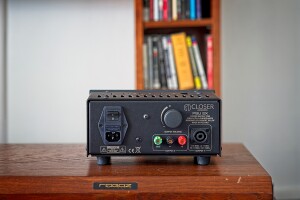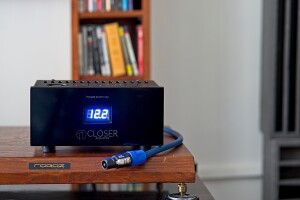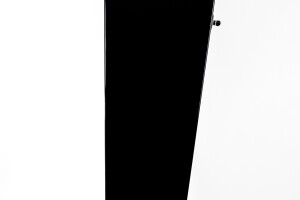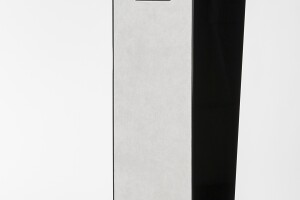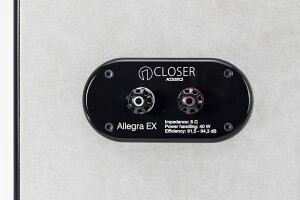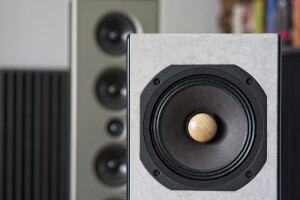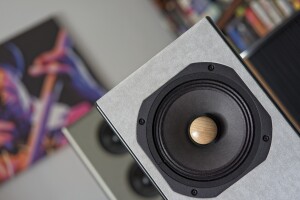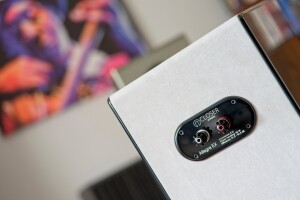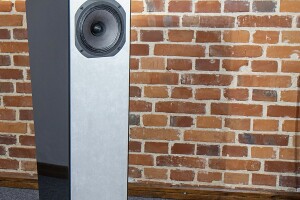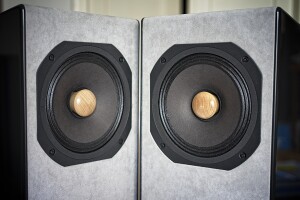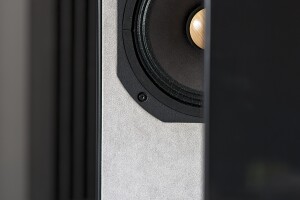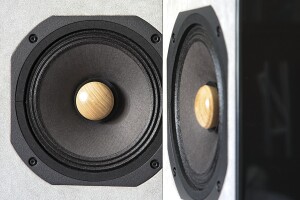There is a group of devoted fans of loudspeaker designs featuring a single, full-range driver, yours truly included. The Closer Acoustics brand, already known to our Readers, not only offers several designs of this type, but in case of two of them, one can choose between a version with a “standard” (nothing ordinary about it really) driver and a one with an electromagnet, or a so-called field coil. For this review the manufacturer delivered the second model from the top, Allegra EX, and the EX designation marks use of „Excitation” drivers (as the French call field coils).
Introduction
I definitely loved my both previous encounters of the Closer Acoustics products, namely the lovely 300B SET called Provocateur in the Signature version (see HERE) and the great Flō phonostage (see HERE). As the this boutique brands intends to offer its customers (almost) complete systems I couldn’t wait to experience the last piece of a puzzle, or at least one of the four (or six – it depends on how you count them) of their loudspeaker models. The top one, Vigo, and the second one from the top, Allegra are available in two versions. Both (models and versions) feature full-range EMS drivers from the French company Electro Magnet Speaker France. The basic versions of both are classic designs (after all, a single driver speakers are as classic design as it gets), and the EX version of each of these models feature field coils.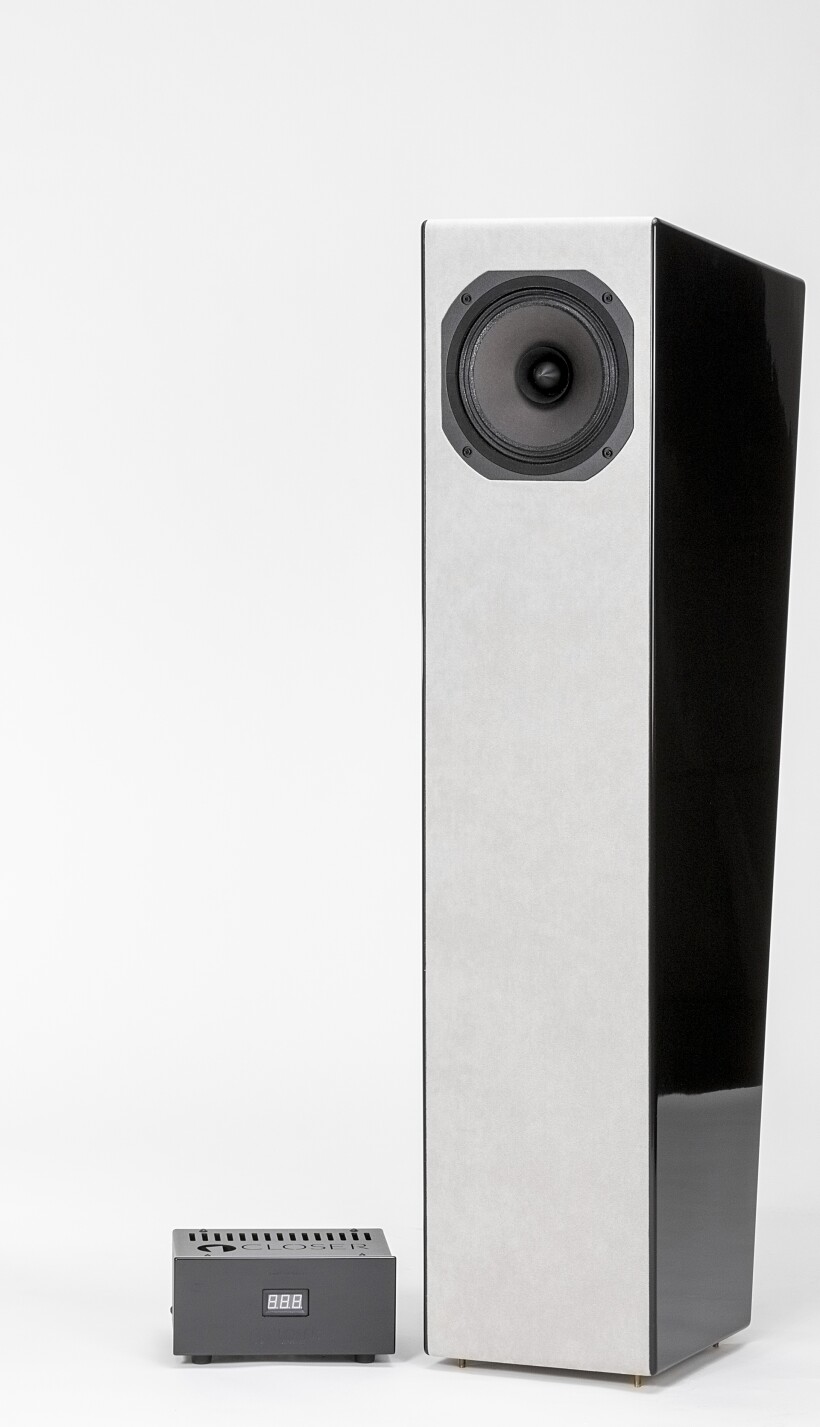
How do they (i.e. drivers) differ from each other? The former (standard) use magnets in their motor, the latter, to put it simply, electro-magnets. Therefore, the latter require additionally direct current (DC), which is sourced from custom power supplies. From the outside, the two Allegra versions can be distinguished only by the presence of a power inlet on the rear panel of the EX version. Hence in their case, a complete set includes two loudspeakers and two external power supplies, plus cables that come handy when you need to connect the latter with the former. It is worth knowing that field coil drivers have been used since as early as the 1920s. In a word, they have been in use for a 100 years. In the beginning they were de facto simpler and more effective solution than their counterparts with ordinary magnets, as the latter had to feature very large (and heavy) magnets to achieve similar effectiveness. Let me remind you that back in those days, mainly large, in today’s standards even huge drivers were used, so the magnets had also to be of a proper (i.e. huge) size. However, the electromagnets could have been smaller and lighter, so they were the preferred solution. Later, when much stronger, and at the same time smaller and cheaper, magnets (ferrite, neodymium, Alnico) became available, field coils were (almost) abandoned. Obviously, they did not disappear completely from the market, but they became a niche product, developed and manufactured by only a handful companies, and it has remained so to this day, although some still see them as the future of high-end loudspeakers.
I have to admit, that the Closer Acoustics Allegra EX were the first loudspeakers with field coil drivers that I had an opportunity to audition in my own system. Earlier listening sessions at shows and presentations had not given me a clear answer as to their possible advantages over standard drivers. A separate issue worth mentioning in the context of this test is the fact that a lot of time had passed since the last time I had listened to any single wide-band driver loudspeakers at home, even though at some point of my audiophile past I had owned even two pairs of such speakers. Each of them featured different drivers, and the first one I had upgraded twice myself (using the designer’s advice), replacing the original Tesla drivers first with Fostex, and then with Voxativ ones (making changes to cabinets as well to accommodate new drivers each time).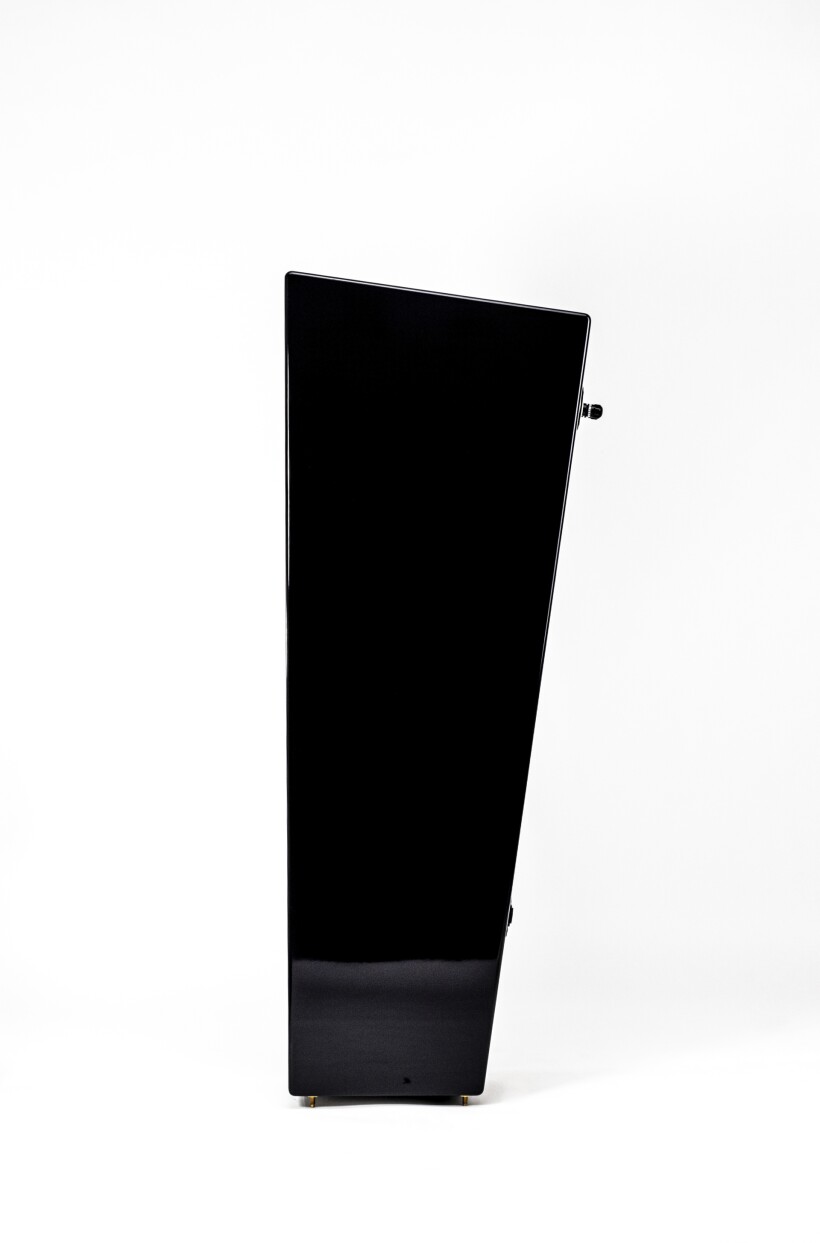
I remember very well both of them, the first Polish (almost DIY) design and the Bastanis Matterhorn that later replaced the former in my system. It was the former that I first upgraded twice with higher quality drivers, and then later added a super-tweeter (by Fostex, with a very simple crossover), and then, for some time, also a subwoofer. All these additions were made to achieve a wider frequency response. The latter featured not only quite a special 15 inch wide-band driver but also a free-standing tweeter. The latter could be easily disconnected which allowed me to listen to music using only the 15’’ one. I still owned the Matterhorn at the beginning of my reviewer’s adventure, but at some point I had to replace them with more versatile, multi-way design that simply did a better job as a reviewer’s tool. The sentiment towards wide-band drivers, preferably driven by a good SET amp, remained with me and I think that it will not change, because such designs and systems offer their own unique set of features, and their incredibly musical, expressive, coherent character truly appeals to my musical sensitivity.
For all those who have dealt with this type of design, it is probably clear that they offer a different sonic experience than more popular multi-way loudspeakers got us used to. Single full-range driver cross-over-less speakers provide, first and foremost, unparalleled sound coherence. Every crossover, even the best ones featuring the top quality components, means a bandwidth division between drivers, and this affects the coherence of the presentation (in a negative way, which is not to claim an overall superiority of single-driver speakers but only in this particular regard). A single driver, most often with a paper diaphragm, usually also means high efficiency, which makes them perfect partners for low-power tube amplifiers. Another characteristic feature differing them from other types of designs is how fast, direct and energetic they sound.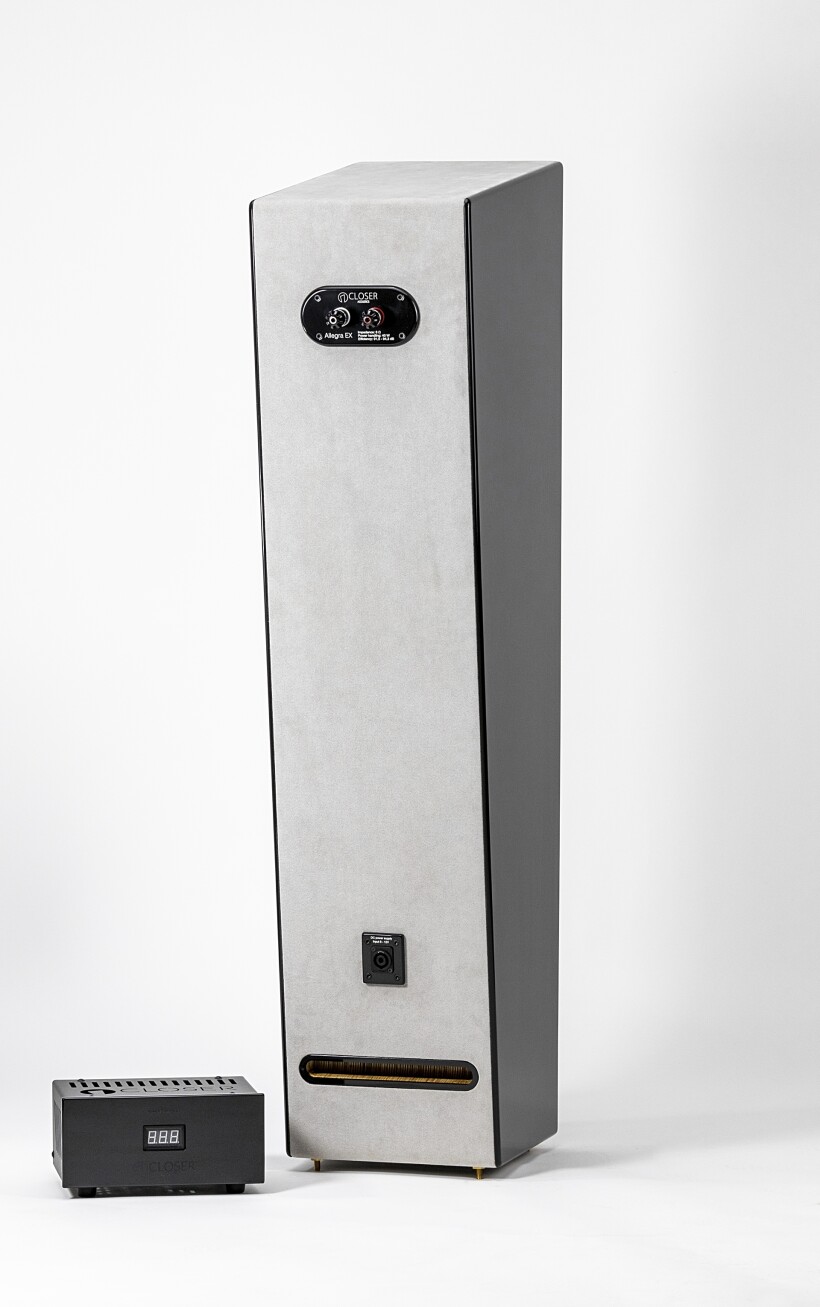
Of course, a single driver, even the best one, has its drawbacks too. First of all, it is not able to reproduce such a wide frequency response as several separate units specialized in specific frequency ranges. In the case of acoustic and vocal music, even some electric one, the one focused in the middle part of the band, such drivers work perfectly well. Nevertheless, the limitation in the bass and treble may be an issue for those with more versatile musical interests which turns them towards other types of speakers. Even more so considering the fact, that if you want to get a relatively wide frequency response from a full-range driver and sound with proper mass, you need to use large and heavy cabinets, such as, for example, back-loaded horn ones. Most people, either because of space limitations or simply for aesthetic reasons, prefer smaller, neat designs that do not occupy a dominant position in the room.
A separate issue concerning audio in general, and not just this type of loudspeakers, is a knowledge and experience needed to use the full extend of advantages of a given type of driver (or whatever other components) while “hiding” its weaknesses. In the case of loudspeakers such as the Allegra EX, in order to achieve the appropriate sonic results, not only designers must do their job perfectly, but also users needs to do their homework. Building a system that will use the full potential of such speakers often requires more effort than it is in the case with multi-way designs. I am mentioning it because I had an opportunity to experience it several times before, while listening to one-way designs both in my room and at various presentations, and the Allegra EX made sure to remind me of it as well.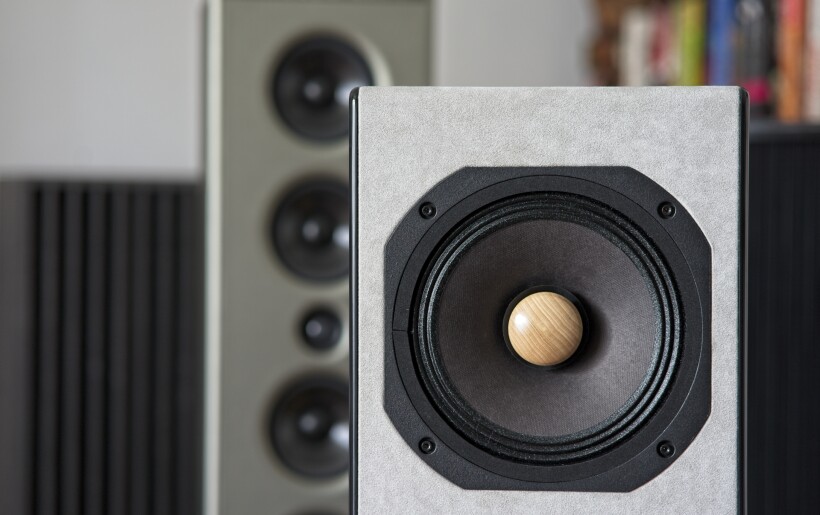
When Mr. Jacek and Andrzej Grodecki brought their loudspeakers to my room, we connected them to my system as it was just to check if they were working properly, if nothing had happened during the transport. Looking at the next perfectly designed and made (by Mr. Andrzej) transport cases, it seemed highly unlikely, but the gentlemen approached the matter professionally and wanted to be sure. The Allegra EX were initially connected to my A-class solid-state integrated amplifier, the GrandiNote Shinai. They were placed a bit further away from the wall behind them than most other speakers, as Mr. Jacek suggested putting them on the carpet. I connected them with the amplifier using my trusted LessLoss speaker cables and toed them slightly in so that they played right in my ears while in listening position.
We fired up the system and … it worked, i.e. the music flowed from both loudspeakers and it was not accompanied by any disturbing sounds, strange noises – everything seemed fined. So the gentlemen packed the cases and set off on a journey back to Jastrzębie Zdrój. The delivery took place a few days before Eastern, and after they left, I got back to whatever I was working on at the time, while the Allegra EX were accommodating in the system playing very quietly in the background (I’ll get back to why only very quietly later). From the start, it seemed as if the sound was somewhat lean, as if it lacked richness, but I didn’t have time to listen to it more carefully to check whether this was actually the case. It was only on the second, or even on the third day that I could finally focus on the tested loudspeakers and I quickly realized that in fact, the sound seemed detailed, it was clean, precise, but I lacked mass, richness, that dense base in the lower midrange and bass, which are essential for delivering a good, full-bodied sound, was missing.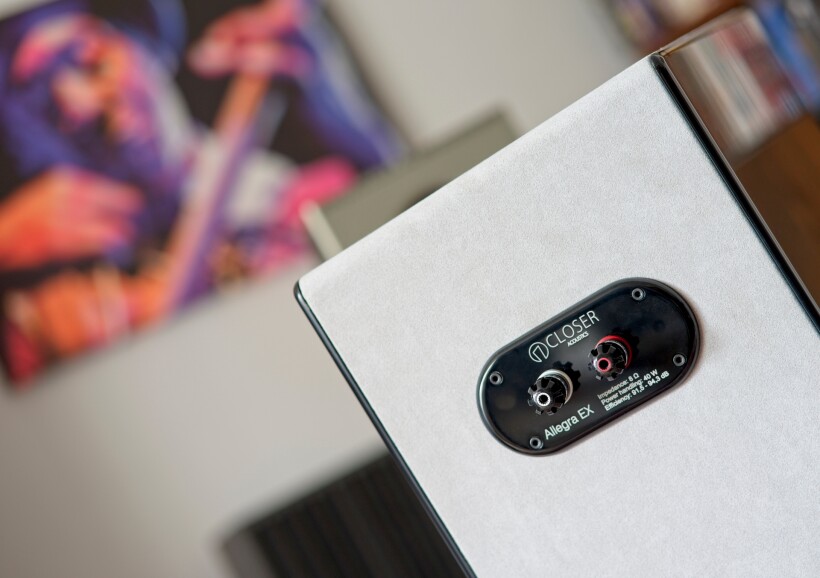
So I replaced the Shinai with the 300B SET (my Art Audio Symphony II, modified), that was supposed to be the main partner for Allegra EX for this test anyway. So now my favorite tube amp, featuring the wonderful Western Electric 300B tubes, was driving the Closer Acoustics field coil speakers and… nothing really changed, i.e. the presentation still lacked the richness and saturation that I expected from a combination of this amplifier and this type of a loudspeaker. I had to look for some other solutions. First, I moved the speakers closer to the wall behind them. I should mention at this point that the Allegra EX features two outlets for a complicated labyrinth occupying the whole inside of their cabinets. There is one on the bottom and the other on the rear panel. Logic dictated that placing them closer to the wall should enhance the reproduction of low frequencies. It’s just that it required moving speakers off a carpet to a wooden floor that would be damaged by spikes. So to protect the latter I placed the Allegra EX on plywood platforms (Mr. Jacek mentioned that his speakers should be placed preferably on a carpet, then on wood, and lastly on a stone / hard surface). The speakers were therefore placed closer to the wall, but at the same time, due to the platforms, the bootom outlet was sitting further away from the floor. The result – nothing really changed in the sound.
Continuing the search for a fuller sound, I took the platforms out from under the speakers and replaced them with Acoustic Revive brass spacers placed directly under the spikes, which, from experience, works great for most speakers. This solution slightly improved the situation, but I still wasn’t happy. So I replaced speaker cables with those once received from Mr. Bastanis (the one who also made the aforementioned Matterhorn speakers). These look like ordinary wires and work surprisingly well with his loudspeakers (that were actually wired with the same cables inside). I know from experience that some loudspeakers of this type seem to prefer such cables with a small cross-section rather than thick, audiophile „hoses”. Actually, these inconspicuous wires did their job nicely and pushed the performance of the Allegra EX towards the richness and fullness of the sound I expected. Yet, it still wasn’t quite it.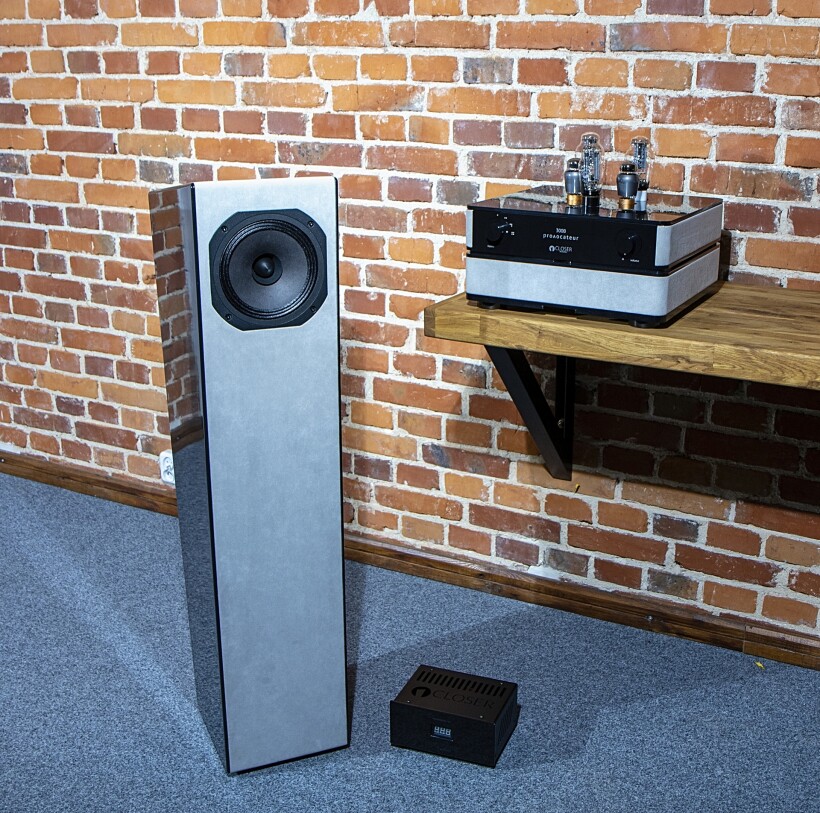
At this point I decided to consult the specialist – Mr. Jacek Grodecki – and ask for directions based on his experience. The basic suggestion he offered was: the loudspeakers should return to the carpet. I had already done it before and it had not given me the desired results. Suggestion # 2 was: raise the loudspeakers by adjusting the spikes so as to increase the distance of the lower labyrinth outlet from the floor and thus enhance the reproduction of the lower part of the band. I had not done this so far, so it was a good idea to try. The last tip, though not directly related to my problem, was that the loudspeakers should be toed-in, so that the left loudspeaker is directed towards the right ear and the right one towards the left, i.e. their axes intersect in front of my listening position. The first two tips – returning Allegra EX to the carpet and adjusting the spikes thus increasing the distance between the bottom of the speaker and the floor (I measured the distance from the bottom edge of the cabinet to the floor – before adjustment it was 1.5 cm and I ended up with a maximum distance of 3 cm) allowed me to finally get a full, rich, properly weighted sound. A bit more of a toe-in, on the other hand, improved the spatial aspects of sound reproduction and precision of the location of phantom images. Ultimately I also kept (after further experiments) Bastanis’ thin speakers cables in the system.
It was only after applying all these small changes and elements together that I finally heard (I believe) what these loudspeakers really had to offer. I hope you will forgive me this lengthy introduction, but I wanted to describe my experience so that you are aware that if you ever listen to Allegra or any other Closer Acoustics loudspeakers at home, you need and should spend a little more time than usual to find the optimal settings, placement and components for them. It will truly pay off, more than in the case of most speakers (although proper setup of any speakers is an essential effort that allows one to get the most of them, but in many cases it will probably take less time!). Funny fact, in some rooms, as Mr. Jacek told me, they have to struggle with an exactly opposite problem – there is too much bass and to achieve a properly balanced performance it is necessary to limit bass output. This is yet another reminder that acoustic conditions play a huge role in shaping the final sound of any system!
Design
The Allegra EX is a version of the base Allegra model featuring a field coil driver. It uses a single full-range driver with a light cellulose (paper) diaphragm. For this speaker Mr. Grodecki chose the EMS LB8EX MKII unit made by the French company Electro Magnet Speaker France. If you don’t know this company, as while being famous among wide-band drivers aficionados it may not be as well-known to a wider range of audiophiles, but you want to learn more about it, let me point you towards a short interview that Mr. Jacek Grodecki conducted with the legendary French designer of the EMS drivers, Mr. Michel Fertin that you can find HERE. HERE on the other hand you will find a a coverage of Mr. Jacek Grodecki’s visit in EMS factory.
The driver used in the Allegra EX is, as the name suggests, a newer, improved version of the 8-inch full-range driver featuring an electro-magnet, so a field coil. In this version, according to the manufacturer, the driver’s diaphragm, the tweeter cone and the phase plug had been optimized. Interestingly, the latter that was used in the Allegra EX pair delivered for this review looks like the one featured in the larger, 12-inch driver. Since, as already mentioned, the EMS LB8EX MKII is a field coil driver it requires an additional DC power supply. Nominally it should be supplied with 12V DC current, but the two proprietary Closer Acoustics power supplies delivered, along with proper cables, with these speakers allow you to adjust the voltage output, which in turn translates into variable efficiency of the tested loudspeakers (within the 89 to 94 dB range).
EMS drivers work in original enclosures developed by Closer Acoustics. Since the internal layout is based on a proprietary solution developed by the manufacturer, they do not advertise its details. All we know is that there is a rather complicated labyrinth in there, that no damping material has been used, and that the labyrinth ends with two outlets. You will find one of them on the rear panel of the loudspeaker, close to the floor level firing to the back, and the other in the bottom of the cabinet, firing down. These unique enclosures are made of high-quality Baltic birch plywood. The side panels, however, are made of acrylic stone. As the manufacturer explains on his website, the complex internal structure includes carefully designed channels ensuring proper rigidity of the whole construction and allows elimination of standing waves inside cabinets. The already emphasized lack of damping materials inside these cabinets allows Allegra EX to maintain the lively character of the sound, especially in the midrange and the high sensitivity of this model.
The shape of quite high (almost 120cm) cabinets is also quite original, as the depth is the smallest at the base and gradually increases up to the top panel. High quality, single speaker terminals are placed at the same height on the rear as the driver on the front to shorten the signal path as much as possible. The weight of each unit (over 40 kg) means that even heavier cables will not influence its stability, though there will be some stress put on the terminals with thicker ones. The whole design rests on four adjustable spikes, which, as I described earlier, can play a huge role in obtaining the right tonal balance. By adjusting their height, we increase or decrease the distance of the outlets (especially the one in the base of the speaker) from the floor or wall, thus significantly affecting the bass performance.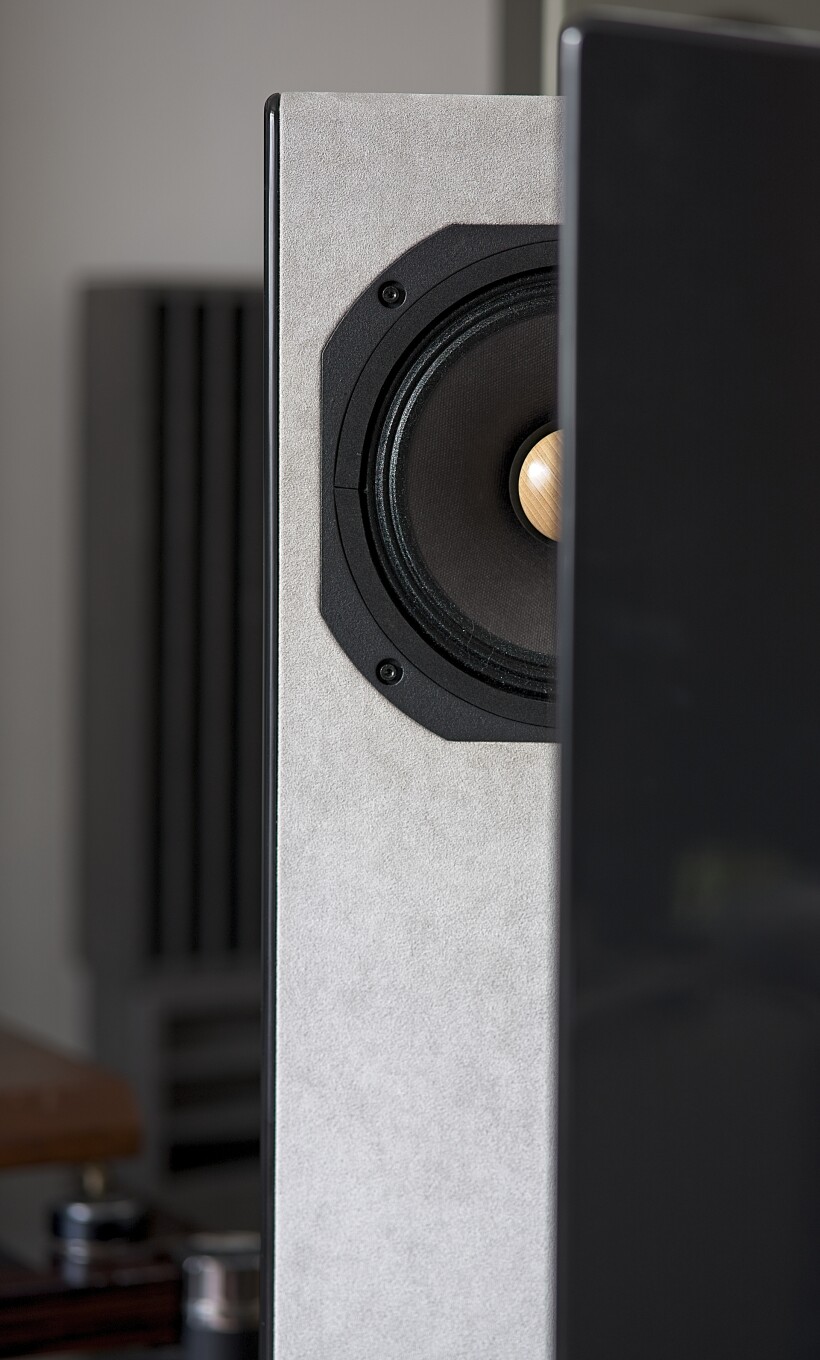
The Polish manufacturer, as in the case of their electronics, offers a wide range of finishes for these (and other models of) loudspeakers. What’s more, customers can choose precisely the same finish for both, amplifier, phonostage and speakers, should they decide to purchase the whole deal from the Closer Acoustics. The two basic finish options are birch plywood + clear varnish + acrylic stone on the sides, or plywood finished with Alcantara + acrylic stone on the sides. Instead of a clear varnish, you can choose almost any other color, the choice of Alcantara and acrylic stone is limited only by whatever their respective manufacturers offer at the time. As I emphasized in my previous reviews of this brand’s products, from the customer’s point of view, dealing with this type of small manufacturer is an ideal solution particularly for those who want to influence the aesthetics of the audio components they are about to purchase. Large manufacturers usually have a limited finish options that are not negotiable and one should remember that he or she is about to spent several years with whatever they buy so having a choice is definitely a great advantage.
Sound
Let me skip the unreliable impressions from the first listening sessions of the Allegra EX, I mean the part before I managed to get them to present at their best. Instead I should focus on the (I believe) optimal, or at least close to optimal performance, obviously in a given system (including the particular room). What the Closer Acoustics speakers ultimately presented was not quite what I expected based on my previous experiences with other loudspeakers of this type (by which I mean single driver ones). In fact, when I found the right settings (height, distance from the wall, what they stood on and optimal toe-in angle) and the setup (Bastanis speaker cables and 300B SET), the limitations resulting from the parameters of the EMS drivers did not catch my ears at all. Exceptionally, for this type of drivers, wide frequency response played a significant role here. One of the first albums I listened to was the “Everything Ice” by Karen Edwards and Jarek Śmietana. It is mostly a quite calm music, with virtually no highest treble or lowest bass, based largely on vocals and the master’s guitar.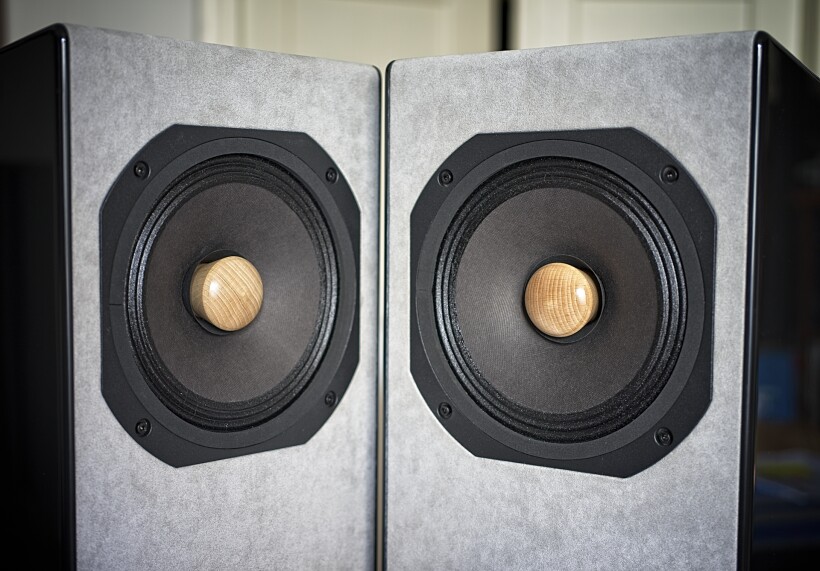
The former (vocals) sounded remarkably present, they were tangible, big and powerful, with sibilants present, but sounding absolutely natural, so completely unobtrusive. The sound was fast, tight, clear and wonderfully engaging – in short, the speakers took full advantage of the great (true) advantages of a 300B SET amplifier driving them. I often call such a sound a direct one – because it is also fast, saturated with energy, highly expressive, present, but all this is not achieved with delivering a particularly weighted performance, but rather through precision and details refining. Referring to the remarks from the beginning of this text, I should explain that Allegra EX are not very suitable for playing music in the background, as they tend to attract the attention of every one in the room with a (electro-) magnetic force and usually keep them on the edges of their seats till the very last note of a given track or album. At least in the case of recordings of some truly charismatic singers and musicians, because they attract attention, electrify listeners, create an emotional, “electric” atmosphere that reminded me that of live performances (that I missed so much!).
As the first album already proved, the occasional more lively rhythms conveyed so well by the Allegra EX got my hands and feet tapping the rhythm, even though it is not really a feature associated with this type of speakers or SET amplifiers. This was one of the main differences compared to other designs featuring standard broadband drivers, which I had listened to before. With those the sound, although usually fast and quite tight (apart from poor designs with boomy bass, but let’s forget about them), did not have such a clearly defined attack, so immediate and precise punch, at least in the bass range (but rather in its upper and middle part). Obviously, I have to rely on (not so reliable) memory for this comparison, but this is a sonic image I’ve had stored in my memory, i.e. of a sound that is a bit more focused on the filling, richness, slightly warmer, and a bit slower, be it my horn speakers or others that I have listened to over the years. And more strongly based on the mid part of the band, or to put it differently, with the band’s extremes playing a lesser role. In the case of the tested Allegra EX my impressions were a bit different, although, obviously, one can’t expect them to reproduce either ultra or infra-sounds. However, despite the fact that the EMS drivers have some limitations at both range extremes, they do not offer as extended treble as multi-way designs featuring good tweeters, or go as low as those equipped with dedicated bass woofers, the sound is so engaging, so smooth, well-balanced and natural that while listening to music, I couldn’t really feel anything lacking from the performance.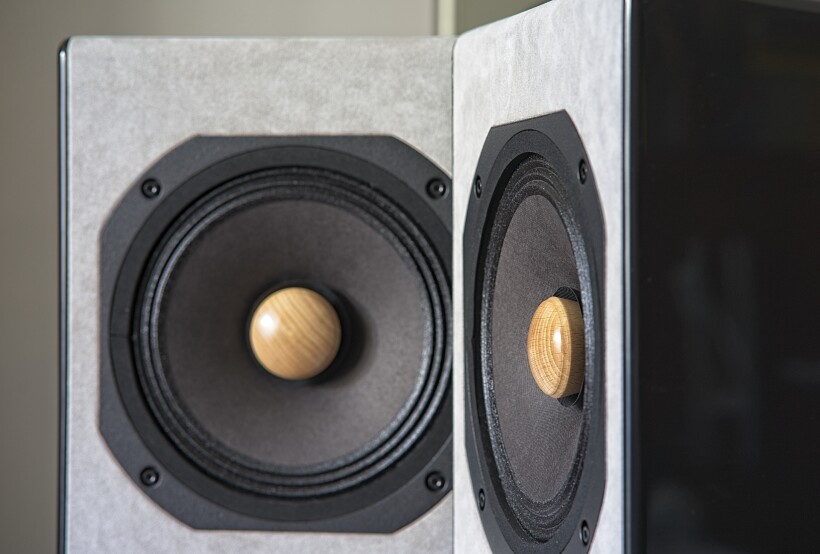
In fact, it was only when it came to the double bass solo, whether on Śmietana’s album or on Ray Brown’s fantastic “Soular energy”, that I heard that there was some limitation in the lowest part of the band. Timbre, differentiation, soundbox supporting strings – these elements were presented beautifully, but the bass did not have as much weight as it should have had. The double bass is, as we all know, a huge, heavy, powerful instrument, and the role of the soundbox (although it depends on the style of individual performer and particular performance) is quite significant. But even now I did not have the impression that it was too small, but just smaller than with my loudspeakers, or as I remembered it (hardly, because of the pandemic) from live performances. So a lot depended on the recording. On the Isao Suzuki’s “Aquamarine” in the “Blow up” track the double bass goes incredibly deep, down to the gates of hell, so to speak, which I heard perfectly with several top speakers, and therefore I missed the ultimate, deepest, weightest notes a bit. On the other hand, listening to Stanley Clarke, quickly plucking the strings of his bass and not allowing them to fully decay, I missed nothing in this sound, and the immediacy of each attack and damping of a string, its springiness and a very good differentiation cause my limbs to tap the rhythm all the time without even realizing it. It was an amazingly immersive, highly enjoyable music experience that distracted me from assessing the reviewed speakers (which is a good thing from my perspective). And as soon as this album was over, I started looking for more of this kind, because listening to them was a real pleasure, even though, theoretically, the Allegra EX should not be the best fit for such music.
Interestingly, also with an electric bass guitar – with Clarke or Marcus Miller presenting their masterful skills, their immaculate playing technique, the Closer Acoustics loudspeakers did an unexpectedly good job. The proper speed and tautness of these sounds was conveyed really well. The pace and rhythm were flawless and that’s yet another feature not necessarily associated with wide-band drivers. Only when it came to the very low, heaviest sounds I could hear some limitations in Allegra Ex’s capabilities. It came as no surprise – field coil or not, it is still a single wide-range driver and no matter how good it is it will never go as low (even supported by a cabinet and room) as a high quality, dedicated bass woofer. It is worth emphasizing, though, that these limitations did not deprive me of the pleasure of listening to such music, and the way it was presented even encouraged me to continue and adventure with recordings with acoustic or electric bass in the main roles. Of course, with my Ubiq Audio Model One Duelund Edition with 12-inch woofers speakers, the bass goes lower, it sounds more powerful, but I perceived this fast, compact version of the same bass proposed by the Closer Acoustics loudspeakers more like a different interpretation than a weakness.
Listening to a much more „audiophile” (than the Śmietana’s) album of the Tingvall Trio titled “Beat” it was easier to evaluate and appreciate the advantages of the field coil driver. The main ones seem to be: transient speed, precision and clarity. These three features, apart from the obvious, exemplary coherence resulting from the lack of a crossover, distinguished the Allegra EX from many other loudspeakers that I have listened to in the last few months (the ones I remember best at least). This way of presenting music means that the attack of the sound, transients, are perfectly shown, but on the other hand, the decay is sometimes extinguished a bit too early. It is not a matter of any distinct shortening of the latter and not being able to compare these speakers to others, one may not even pay attention to it at all. However, knowing specific, high quality recordings from many listening sessions, this feature of the Closer Acoustics loudspeakers can be noticed. The already mentioned purity or clarity of the sound is also remarkable, perfectly audible in the case of this album, for example due, to the beautifully vibrant, pearly piano of the group’s leader, Martin Tingvall.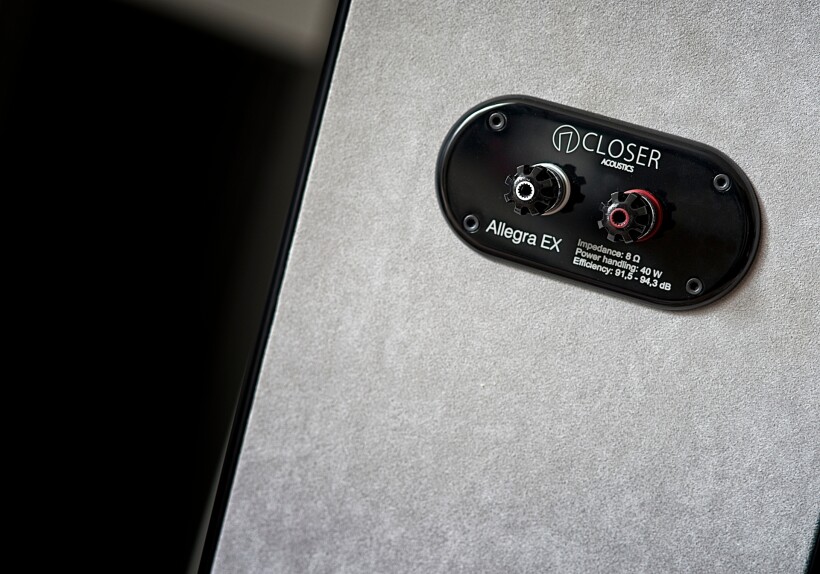
Vocals are one of the specialties of this type of drivers/speakers so one may say I left the best for the last. After a short hesitation (resulting from the fact that reaching for any album from this release often ends with auditioning all three boxes – 12 records) I pulled out one of Kate Bush’s latest releases at random (it turned out to be the “Never for Ever”). I have never got around to review this fantastic release of the form of three boxes with the artist’s whole discography, from (I believe) 2019. Yet, I did mention multiple times how fantastic it is. The new great remastering job and very good pressings resulted in a great sound. Kate Bush’s music played using the Allegra EX sounded warm, natural, but also clean, tangible and precise. The presentation was beautifully spatial, with a fantastic imaging and perfect rendering of extra-musical special effects (such as, for example, the sound of steps moving around on the stage).
It was an open, air-filled presentation built around the artist’s enchanting vocals. The unique timbre and texture of Kate Bush’s voice, her vocal manners – everything was shown in an extremely faithful, convincing and true way. As I feared, having heard this first album I had to keep listening to all of them. It meant spending several hours with Kate and I still didn’t have enough even after going through twelve records. So I spent the next few days listening to other, with the Allegra EX wonderfully sounding voices from high quality recordings. The latter factor is important since, as most speakers with a single driver, also the Allegra EX differentiate recordings really well and they are not (even driven by the 300B SET) particularly forgiving for those of lesser quality. So I spent days with various vocals of such diverse artists as Pavarotti and Leontyna Price, Steven Tyler, Janis Joplin, Patricia Barber and Hanna Banaszak. Whether it was classical music, rock, jazz or even sung poetry, the Closer Acoustics loudspeakers presented their exceptional communication skills. Each time they created this special relationship between the artist and the listener, built up tension, triggered emotions, and the music was the only thing that mattered at any given moment. I think that was the intention of their creators which they managed to implement perfectly in these unique, in every possible way, boxes.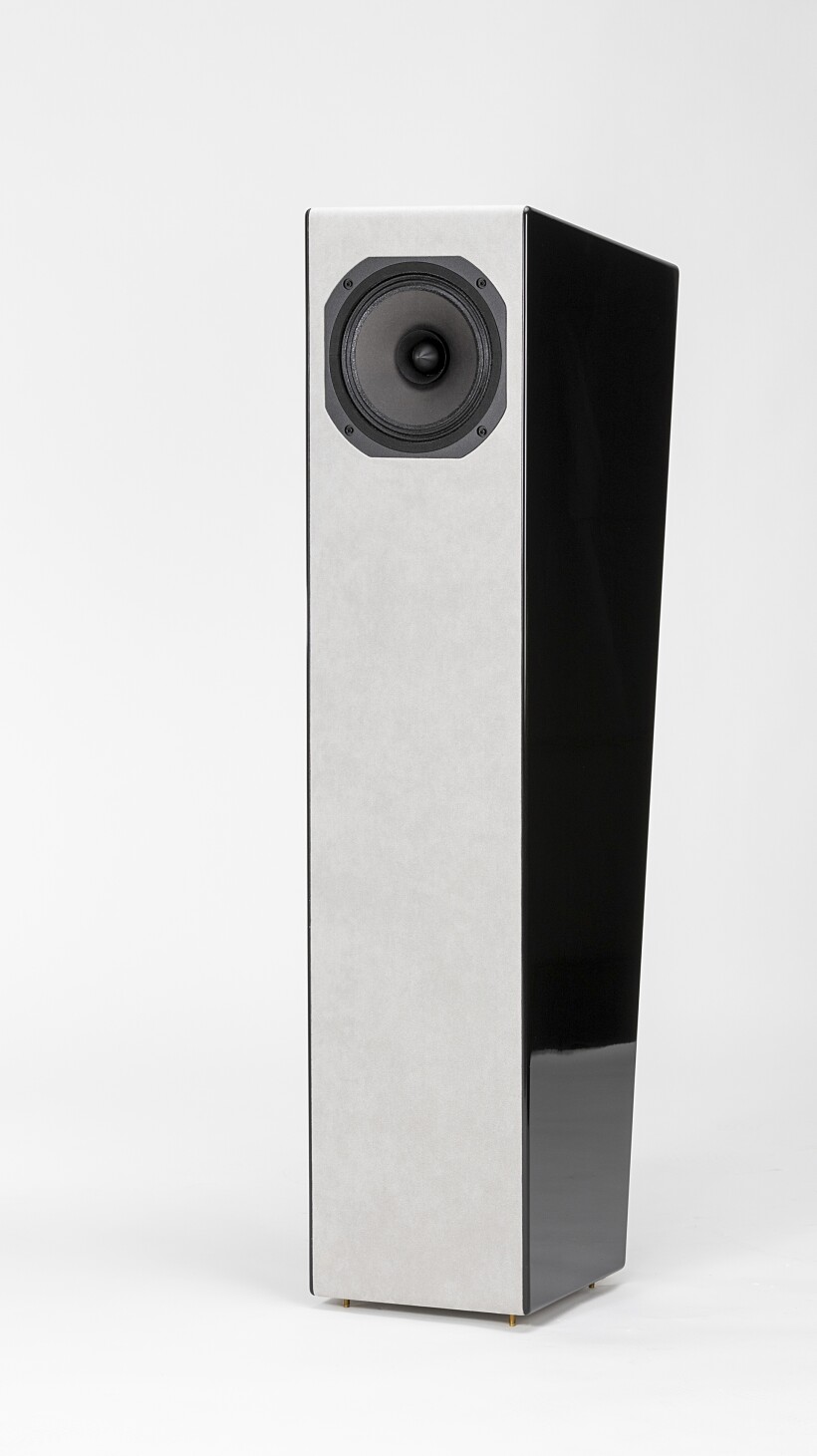
Summary
Designers of loudspeakers (or, in fact, each audio component) may have different goals in mind while developing their projects. Having experienced the performance of the amplifier, phonostage and now loudspeakers by the Closer Acoustics, it seems to me that I managed to decipher what is truly important for the people behind this brand. I believe that in each of these cases it was about creating a close, emotional relationship between a listener and the music. About immersing him / her / them in a natural, direct, wonderfully engaging sound, which is not perfect in audiophile terms, but when experiencing it, it simply does not matter at all. All that counts is music and surprisingly close contact with its performers. If this is what you are looking for, if you want to spend your free time with your favorite artists, simply enjoying the music and experiencing real emotions, the Closer Acoustics’s Allegra EX (supported by a high quality, preferably tube, amplifier and source), may give you a chance for a piece of your own musical heaven. Give them a chance – there is a good chance they will win your affection.
Technical specifications (according to the manufacturer):
- Design: 1-way
- Driver: EMS LB8EX MKII (field coil) by Electro Magnet Speaker France
- Impedance: 8 or 16Ω
- Sensitivity: adjustable in 89 – 94 dB range
- Frequency range: 40 Hz – 19 kHz
- Power handling: 40 W
- Dimensions (H x W x D): 117 x 26 x 43 cm
- Weight: 44 kg
Prices (when reviewed):
- Closer Acoustics Allegra EX: 6.528 EUR (excl. VAT)
- Closer Acoustics Allegra: 5.136 EUR (excl. VAT)
Manufacturer: CLOSER ACOUSTICS
Associated equipment:
- Analogue front end: J.Sikora Standard MAX turntable, J.Sikora KV12 tonearm, AirTight PC-3, phonostages: Grandinote Celio mk IV, ESE Lab Nibiru V 5.
- Digital source: a passive, custom server with WIN10, Roon, Fidelizer Pro 7.10, JCat USB Femto card with iFi power supply, Hdplex linear power supply for PC, JCAT USB Isolator
- D/A Converter: LampizatOr Pacific +Ideon Audio 3R Master Time (USB signal regenerator)
- Power amplifiers: GrandiNote Shinai, Art Audio Symphony II (modified)
- Preamplifier: Audia Flight FLS1
- Loudspeakers: GrandiNote MACH4, Ubiq Audio Model ONE Duelund Edition.
- Interconnects: Hijiri Million, Hijiri HCI-20, TelluriumQ Ultra Black, KBL Sound Zodiac XLR, David Laboga Expression Emerald USB, TelluriumQ Silver USB
- Speaker cables: LessLoss Anchorwave
- Power cables: LessLoss DFPC Signature, Gigawatt LC-3
- Power: Gigawatt PF-2 MK2 and Gigawatt PC-3 SE Evo+; a custom power line with Gigawatt LC-Y in-wall cable; Gigawatt G-044 Schuko and Furutech FT-SWS-D (R)
- Racks: Base VI, Rogoz Audio 3RP3/BBS
- Anti-vibration accessories: ROGOZ-AUDIO SMO40 and CPPB16 platforms and ROGOZ AUDIO BW40MKII feet, Franc Accessories Ceramic Disc Slim Feet and Wood Block Platform




